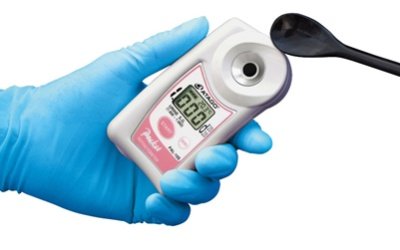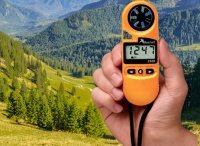How to Use the PAL-10s Digital Refractometer to Measure the Specific Gravity of Urine

A urine specific gravity test compares the density of urine and water, often to indicate renal function. Various refractometers are capable of measuring urine's specific gravity. In this article, an Instrument Choice Scientist demonstrates how to perform a urine specific gravity measurement using the IC-PAL-10s Digital Refractometer.
Figure 1 Watch an Instrument Choice scientist demonstrate how to use a digital refractometer for urine (specific gravity) here.
How to Use the PAL-10s Digital Refractometer to measure Urine (Specific Gravity)
Materials
You will need;
- IC-PAL-10s Digital Refractometer
- Water (distilled or tap water)
- Urine sample
- Transfer pipette
- Appropriate PPE (gloves, eye protection etc.)
Zero Calibration
To ensure accurate measurements, perform a zero calibration daily before using the IC-PAL-10s. Note: The water (and any subsequent samples) and prism should both be at ambient temperature. If not, place the water on the prism and let it acclimatise for around 20-seconds before performing your zero calibration.
Zero Calibration Method
- Apply a few drops of ambient temperature water onto the prism.
- Press the START button.
- The measurement on the screen should read "0000". If the reading is 0000, skip ahead to step 5. If the LCD is reading above 0000, press the ZERO
- "0000" will blink twice on the screen then remain. Zero setting calibration is complete.
- Wipe the prism clean.
Zero Calibration Troubleshoot
- If you receive the error message "AAA" wipe the prism clean, apply water and press the ZERO button again.
- If you receive the error message "nnn" there is too much light entering into the prism. To prevent this, shade the sample stage with your hand and retake the measurement.
Sample Analysis
It is essential to note that initial measurements may fluctuate if your sample's temperature is too hot or too cold. To counteract this, wait for your instrument to adjust to the sample temperature. For small volumes, this should be around 20 seconds. Alternatively, continue pressing the start button and taking continuous measurements. When the reading becomes stable after several continuous tests, record the results.
- Use a pipette to apply the urine sample to be tested onto the prism. The sample size should be around 0.3mL.
- Press the START
- "---" will appear on the screen as the unit takes a measurement.
- The specific gravity measurement and prism temperature will appear on the LCD.
Conclusion
The Digital Hand-held Pocket Urine Refractometer (IC-PAL-10s) is a compact, easy-to-use clinical refractometer that analyses urine specific gravity in as little as four steps.
For more information on this or other specific gravity refractometers, see the links below or contact us!
Additional links
- View the Digital Hand-held Pocket Urine Refractometer - IC-PAL-10S.
- Watch "How to Use a Digital Refractometer For Urine (Specific Gravity)"
- Want to see what comes in the box? Watch an Instrument Choice scientist "Unboxing The Digital Hand-Held Pocket Urine Refractometer - IC-PAL-10s".
- NFC is an efficient data transfer feature on PAL refractometers that allows users to transfer data from their Android phone or computer. Watch the video demonstration: "How to use the Data Transmission Function on Atago Pocket Refractometers."
- Browse all meters by Atago here.
- Discover the full range of life science and clinical refractometers at Instrument Choice here.

Also interesting
Several types of refractometers are suitable for measuring specific gravity. For this demonstration, we have chosen the IC300005 clinical refractometer to showcase the technique required using an optical refractometer to measure urine's specific gravity (and refractive index). Readings only take seconds.

Kestrel is known for very accurate, straightforward environmental monitoring solutions. Your Instrument Choice Scientists have formulated four easy-to-follow tips to ensure the highest level of precision from Kestrel's handheld products.

